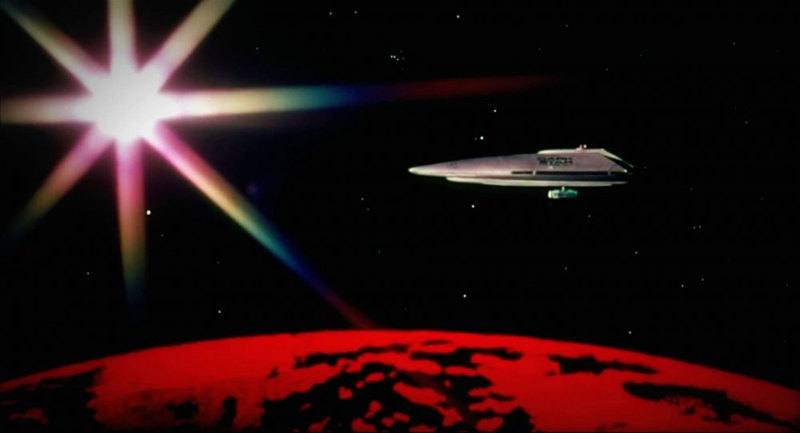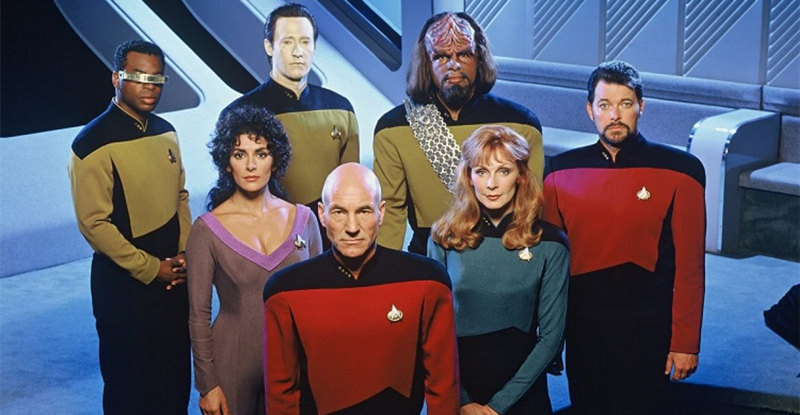Edward Stratemeyer and Walt Disney had a lot in common. Stratemeyer tapped into the juvenile market by starting a syndicate of children’s book series, including The Bobbsey Twins, Nancy Drew, and The Hardy Boys. Disney, of course, got in on the ground floor of children’s TV programming with “The Mickey Mouse Club” and solidified their hold on wholesome family entertainment with the “Disneyland” series. So it was only natural that the two would join forces on a serial to launch the second season of “The Mickey Mouse Club.”
“Spin and Marty” was such a success the first season that it was a no-brainer for Disney to hire the popular Tim Considine to play older brother Frank Hardy. They screen-tested Tommy Kirk (Joe Hardy) and liked what they saw. So did Kirk, who says in one of the extras on this “Walt Disney Treasures” metal-boxed release that he’s only had the feeling that something was good just a few times in his career, and one of those times was the first Hardy Boys serial (the others, we can surmise from his comments, were “Old Yeller,” “The Shaggy Dog,” and “Swiss Family Robinson”).
The serial concept was a stroke of genius. Though “The Mickey Mouse Club” was entertaining enough, it was the serials that everyone looked forward to. And the surprising thing is, they were so well done that they still hold up today. But as with most things Disney, it all started with a song. The minute you saw a pirate flag fluttering in the wind and heard this deep voice intone, “Gold doubloons and pieces of eight, handed down to Applegate,” you were hooked. And since most of the series was shot on Disney’s famed Stage 2, they had control over the lighting so they could give it the full noir treatment.
Jackson Gillis, who penned the screenplay for “Spin and Marty,” also wrote “The Hardy Boys and the Mystery of the Applegate Treasure,” which was based on the very first Hardy Boys book, The Tower Treasure (1927). If it all seems a little Fifties’ quaint now, it’s not just the Disney aesthetic. We learn on one of the bonus features that Disney actually got complaints from parents that the Hardy Boys were placed in situations that were too dangerous–this, despite the young actors appearing on-camera to warn viewers that they might see some scary things. Now, of course, kids see a crook with a shovel taking a swing at the boys and they don’t think anything of it. But then, it was a big deal.
Like most children of the Fifties, I couldn’t wait for those “Mickey Mouse Club” serials, and the best of the bunch were the first “Spin and Marty” and the first “Hardy Boys.” Each show had some endearing characters–even the adults–and production values that were closer to film than television. Though Russ Conway didn’t get that much time onscreen as the boys private detective father, Fenton Hardy, we had the same sense of him being larger than life as his boys. And old man Applegate, with his colorful robe and his penchant for brandishing a cutlass or pirate dagger? Florenz Ames was codgerly charismatic as the eccentric that just about every neighborhood had–someone whose personality and creepy old house struck fear (and curiosity) into the hearts of the neighborhood children.
The plot turns on Applegate’s eccentricity. Is he, or is he not a lunatic? Did he, or did he not have a pirate treasure that was handed down to him by his great grandfather? Ten years ago, rumors of the treasure sparked a community riot, sending neighbors to his yard with shovels and picks. Now, no one believes there ever was a treasure . . . except the Hardy Boys. A young man that Applegate hired to mow his lawn showed them a doubloon he found while digging near the house, and that sets this mystery in motion. Assisted and tormented by Iola (Carole Ann Campbell), the roller-skating neighborhood girl who has a crush on Joe, the boys start to poke around. There are suspects and red herrings, as in any mystery, but the heart of this serial is more family-oriented. The boys just want to spend time with their father and earn his respect, and they yearn for a real case so they can be just like him. Eventually they win him over too, and father helps the sons to try to solve this mystery. In the end, though, it’s the boys who manage to relocate the treasure that was apparently stolen from Applegate’s chest years ago. Who, how, why? Well, that’s the mystery.
Video:
For a black-and-white show from 1956, the picture looks very good. Then again, you’d expect that from “vault” Disney. There’s a slight graininess, but considering that most of the filming was done at night (i.e., simulated darkness on the soundstage), it’s not murky and there’s a surprising amount of detail. “The Hardy Boys” is presented in a 1.33:1 aspect ratio.
Audio:
The audio is a simple Dolby Digital Mono, but it’s clear and robust enough for the deep-voiced theme song to still give you chills.
Extras:
For a tin-boxed “treasure,” the bonus features are surprisingly average. Leonard Maltin, who’s been hired by Disney to introduce the “Treasures” series and conduct interviews, gives an okay intro on disc one, but he has a tendency to be wordy and rambling. When you pop in disc two and up pops Maltin again, the impulse is to hit the fast-forward or “next” button. As an interviewer, he’s better than average though. If you can get past the passage of time by seeing two guys on-camera that bear absolutely NO resemblance to Considine and Kirk, the interview that Maltin conducts with the two stars 50 years later on Stage 2 has plenty of nice moments. One particularly amusing one comes when the two talk about their rivalry over Annette Funicello and you can tell there’s still something there.
The only other feature, aside from a “collectible” comic book facsimile and a booklet that surprisingly doesn’t list or credit any of the actors, is a decent rundown on how the popular book series became a hit TV serial.
Bottom Line:
Some of the old Disney shows have mostly nostalgic value, but “The Hardy Boys” holds up surprisingly well. Yes, it’s all Fifties and it’s a little corny, but the screenplay is strong, the characters and performances are endearing, and there’s more noir than you can shake a cutlass at!


